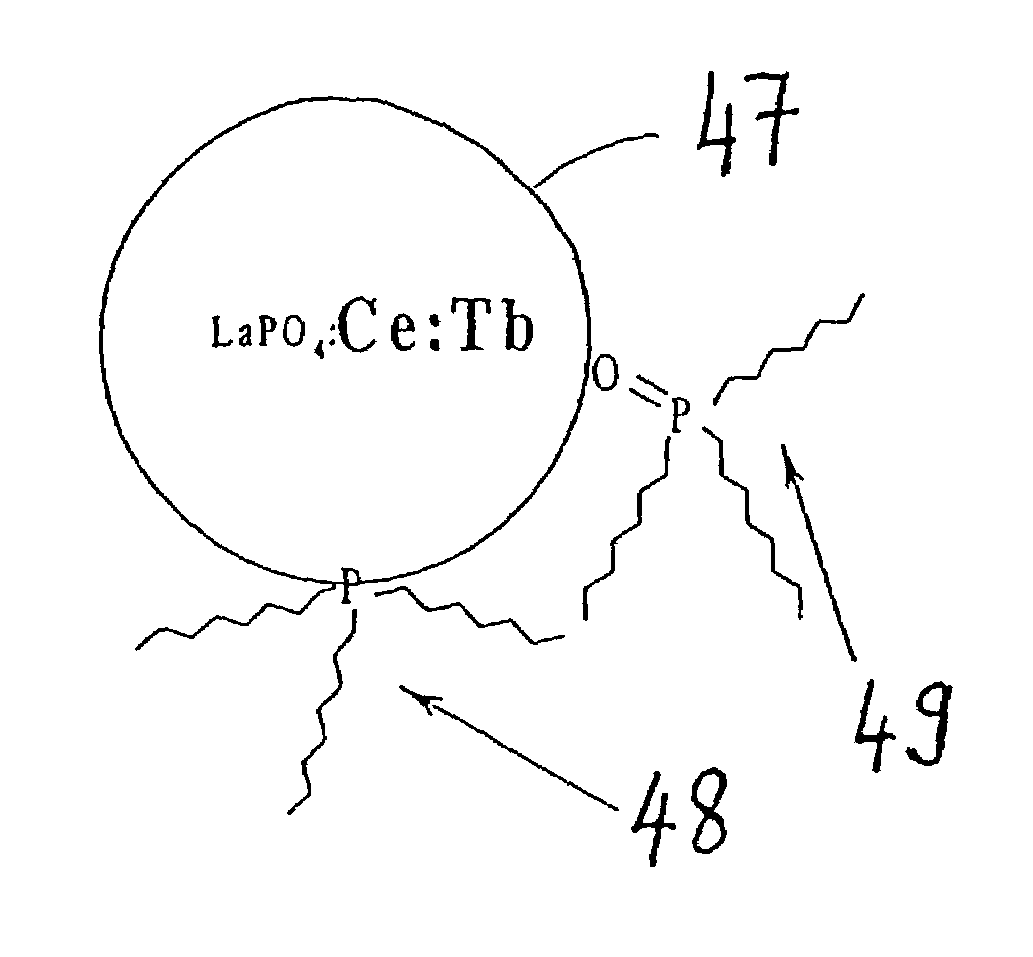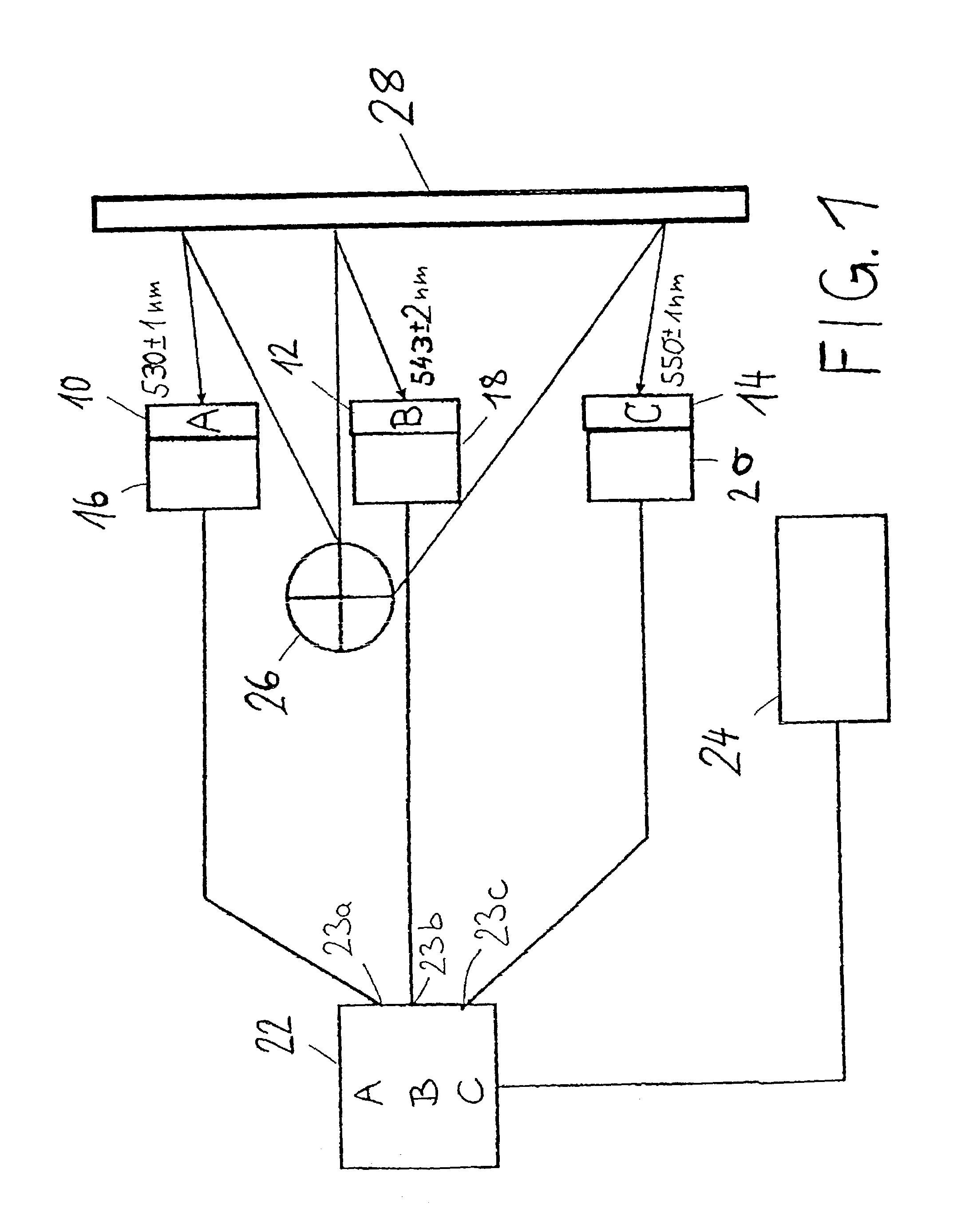Synthesis of nanoparticles
a nanoparticle and nanoparticle technology, applied in the direction of optical radiation measurement, peroxide/peroxyhydrate/peroxyacid/superoxide/ozonide, etc., can solve the problems of concentrated quenching, limited fluorescence intensity that can be maximally reached, and low sensitivity of organic fluorescent dye in powder form, so as to enhance the efficiency of collectors and enhance the sensitivity of commercial detectors.
- Summary
- Abstract
- Description
- Claims
- Application Information
AI Technical Summary
Problems solved by technology
Method used
Image
Examples
Embodiment Construction
[0173]The following paragraph gives first a detailed description of a preferred embodiment for a synthesis method of the invention. The example is the preparation of LaPO4Ce:Dy.
[0174]1. LaPO4Ce:Dy
[0175]a) Into a first, 50 ml-containing round-bottom flask with reflux condenser, temperature sensor and heating mantle attached 20 ml of commercially available TOP (90%) are poured and evacuated at approx. 323 Kelvin (K) for one hour with stirring.
[0176]b) In a second flask 2 g of TOPO and 2.3 ml of TOP are mixed and slightly heated until the TOPO is melted and the mixture is homogenous.
[0177]c) In a third flask the salts LaCl3 (0.001 mol), CeCl3 (0.0012 mol), and DyCl3 (0.00024 mol) are dissolved in 3 ml of methanol and subsequently poured into the TOP / TOPO mixture.
[0178]d) Then 0.0028 mol of H3PO4 are added to the above-named 50 ml round-bottom flask and stirred under vacuum at 323 Kelvin.
[0179]e) After this, the methanol is removed from the salt-TOP / TOPO-methanol mixture by distillation...
PUM
 Login to View More
Login to View More Abstract
Description
Claims
Application Information
 Login to View More
Login to View More - R&D
- Intellectual Property
- Life Sciences
- Materials
- Tech Scout
- Unparalleled Data Quality
- Higher Quality Content
- 60% Fewer Hallucinations
Browse by: Latest US Patents, China's latest patents, Technical Efficacy Thesaurus, Application Domain, Technology Topic, Popular Technical Reports.
© 2025 PatSnap. All rights reserved.Legal|Privacy policy|Modern Slavery Act Transparency Statement|Sitemap|About US| Contact US: help@patsnap.com



